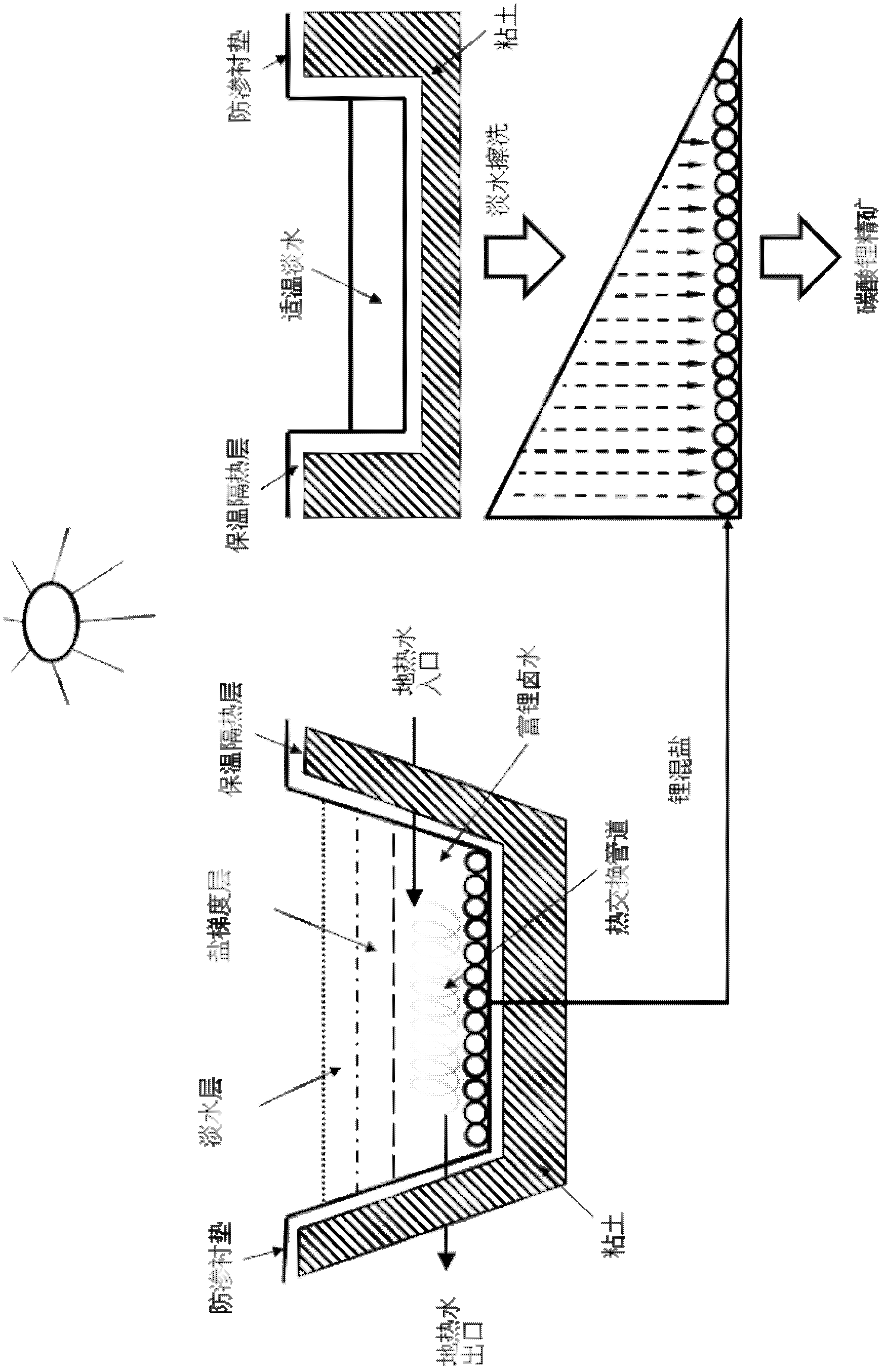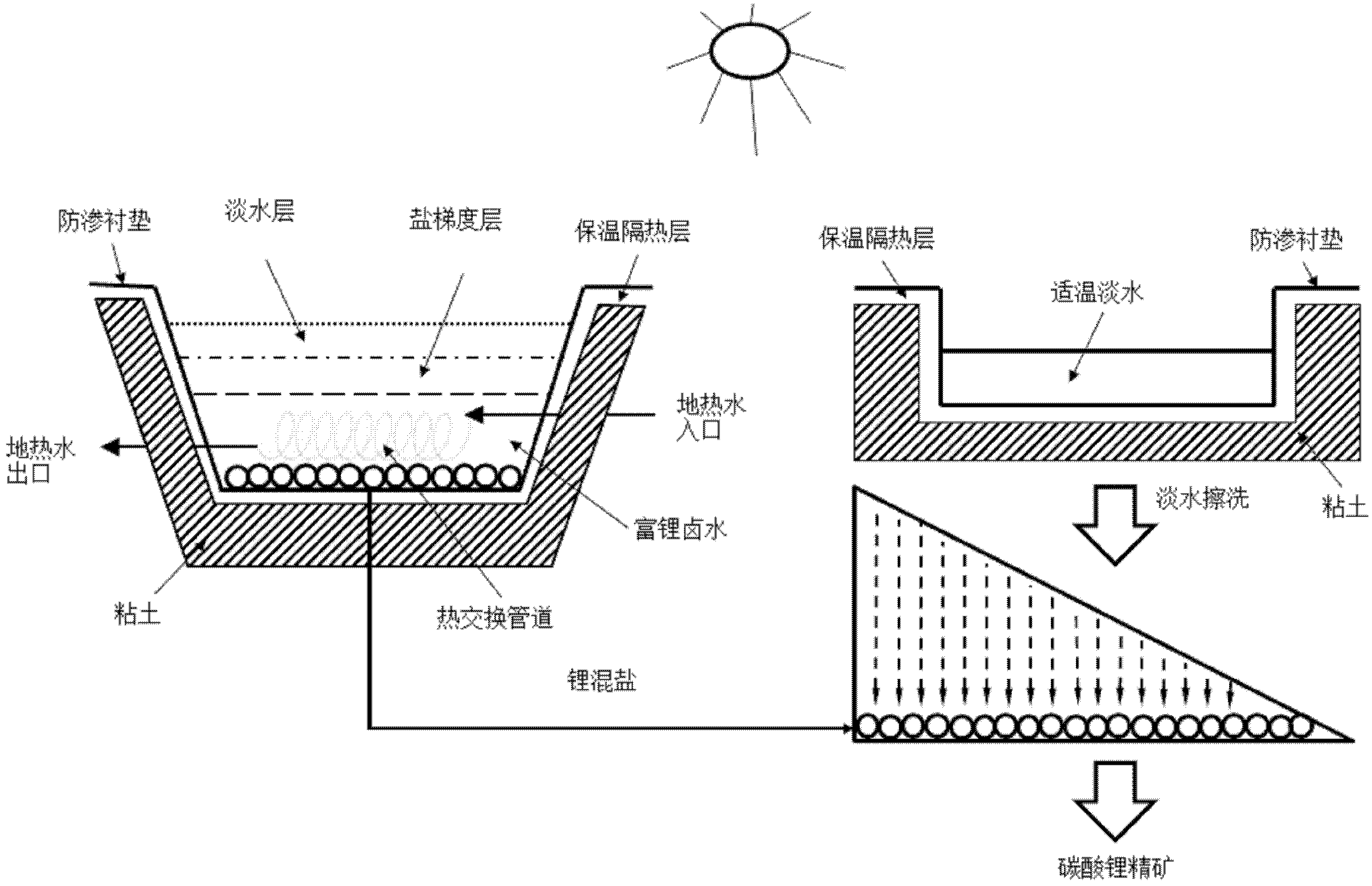Method for extracting lithium carbonate from carbonate brine
A carbonate type, lithium carbonate technology, applied in lithium carbonate;/acid carbonate, solar collectors using working fluids, lighting and heating equipment, etc., can solve the problem of temperature reduction, consumption of large minerals problems such as fuel, high cost of freight and energy, to achieve the effect of increasing the heating rate and heating range, improving production efficiency and product yield, and saving construction costs
- Summary
- Abstract
- Description
- Claims
- Application Information
AI Technical Summary
Problems solved by technology
Method used
Image
Examples
Embodiment Construction
[0021] The specific embodiments of the present invention will be further described below in conjunction with the drawings.
[0022] Reference figure 1 The method for extracting lithium carbonate disclosed in the present invention uses a salt gradient thermal insulation solar pond with a heat exchange pipeline as a crystallization pond to crystallize and precipitate lithium carbonate from carbonate-type brine. Said salt gradient thermal insulation solar pond is directly built of clay, with a lighting area of 1000~10000m 2 , The depth of the pool is 3~4m, the bottom and the inner wall of the pool are made of plastic film and thermal insulation materials to form a sandwich structure of thermal insulation. The inner surface of the pool can be covered with black EPDM waterproofing membrane, geomembrane or high-density polyethylene spray Plastic canvas is used as a liner to prevent brine penetration; U-shaped or spiral heat exchange pipes are installed at a height of 0.5-1m from the ...
PUM
 Login to View More
Login to View More Abstract
Description
Claims
Application Information
 Login to View More
Login to View More - R&D
- Intellectual Property
- Life Sciences
- Materials
- Tech Scout
- Unparalleled Data Quality
- Higher Quality Content
- 60% Fewer Hallucinations
Browse by: Latest US Patents, China's latest patents, Technical Efficacy Thesaurus, Application Domain, Technology Topic, Popular Technical Reports.
© 2025 PatSnap. All rights reserved.Legal|Privacy policy|Modern Slavery Act Transparency Statement|Sitemap|About US| Contact US: help@patsnap.com


